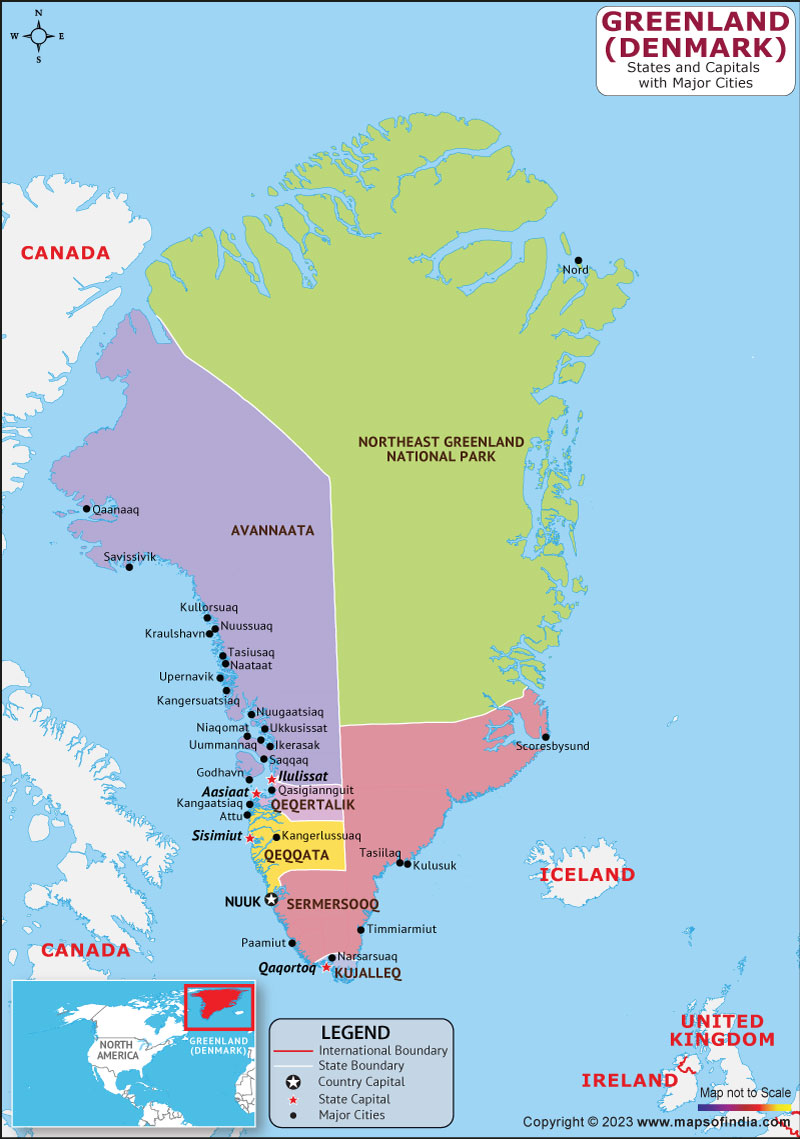Greenland is the world's biggest island and is Situated between the Atlantic and Arctic Oceans. It is an autonomous territory within the Kingdom of Denmark, and its population is primarily made up of the Indigenous Inuit people. Greenland is known for its vast landscapes of glaciers and ice sheets, as well as its unique wildlife, including polar bears and whales. Despite its remote location, Greenland has a rich cultural heritage and is home to a vibrant Indigenous community.
History
Greenland has a long and complex history, with evidence of human habitation dating back over 4,500 years. The Indigenous Inuit people have inhabited the island for thousands of years, and their culture is still a vital part of life in Greenland today.
In the 10th century, Viking explorers arrived on the island and established several settlements, including the famous colony at Brattahlid. The Viking settlements eventually disappeared, and Greenland remained a primarily Indigenous society until the arrival of European whalers and missionaries in the 18th and 19th centuries.
In 1953, Greenland became an official part of the Kingdom of Denmark, and it has since undergone significant political and economic changes. Today, Greenland is an autonomous territory within the Kingdom of Denmark, with its own government and parliament.
Culture
Greenland has a rich cultural heritage, influenced by the island's Indigenous Inuit people as well as its history of Viking and European exploration. The country is known for its unique music, art, and cuisine.
Inuit culture is a vital part of life in Greenland, with traditional practices such as dog sledding and hunting still an important part of daily life for many communities. Greenlandic cuisine is also influenced by Inuit culture, with traditional dishes including whale and seal meat, as well as fish and other seafood.
Language
The official language of Greenland is Kalaallisut, which is spoken by the majority of the population. Danish is also widely spoken, and English is commonly used in tourist areas.
Geography
Greenland is the world's largest island, with a total area of over 2 million square kilometers. The island is located between the Arctic and Atlantic Oceans, and it is mostly covered by ice and glaciers. The country has a polar climate, with extremely cold temperatures and long periods of darkness during the winter months.
Despite its extreme climate, Greenland is home to a unique and diverse range of flora and fauna, including polar bears, reindeer, and several species of whales and seals
| Official Name | Greenland |
| Capital | Nuuk |
| Population | 2166086 |
| Area | 56,466 km2 |
| Currency | Danish Krone |
| Religion | Christianity |
| Language | Greenlandic |
| Major Cities | Ilulissat, Sismiut, Narsaq |
FAQs
Q1: Is Greenland an independent country?
Greenland is an autonomous territory within the Kingdom of Denmark, meaning that it has its own government and parliament, but is still technically part of Denmark.
Q2: What is the population of Greenland?
The population of Greenland is around 56,000 people, the majority of whom are Indigenous Inuit people.
Q3: What is the official language of Greenland?
The official language of Greenland is Kalaallisut, which is spoken by the majority of the population.
Q4: What are some popular tourist attractions in Greenland?
Greenland is known for its stunning natural landscapes, including the Ilulissat Icefjord, which is a UNESCO World Heritage site, as well as its unique wildlife, including polar bears and whales.
Last Updated on: July 09, 2025
